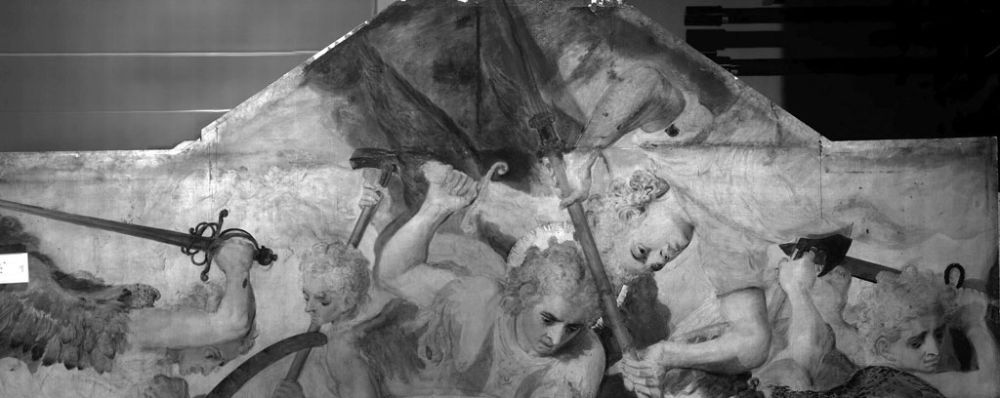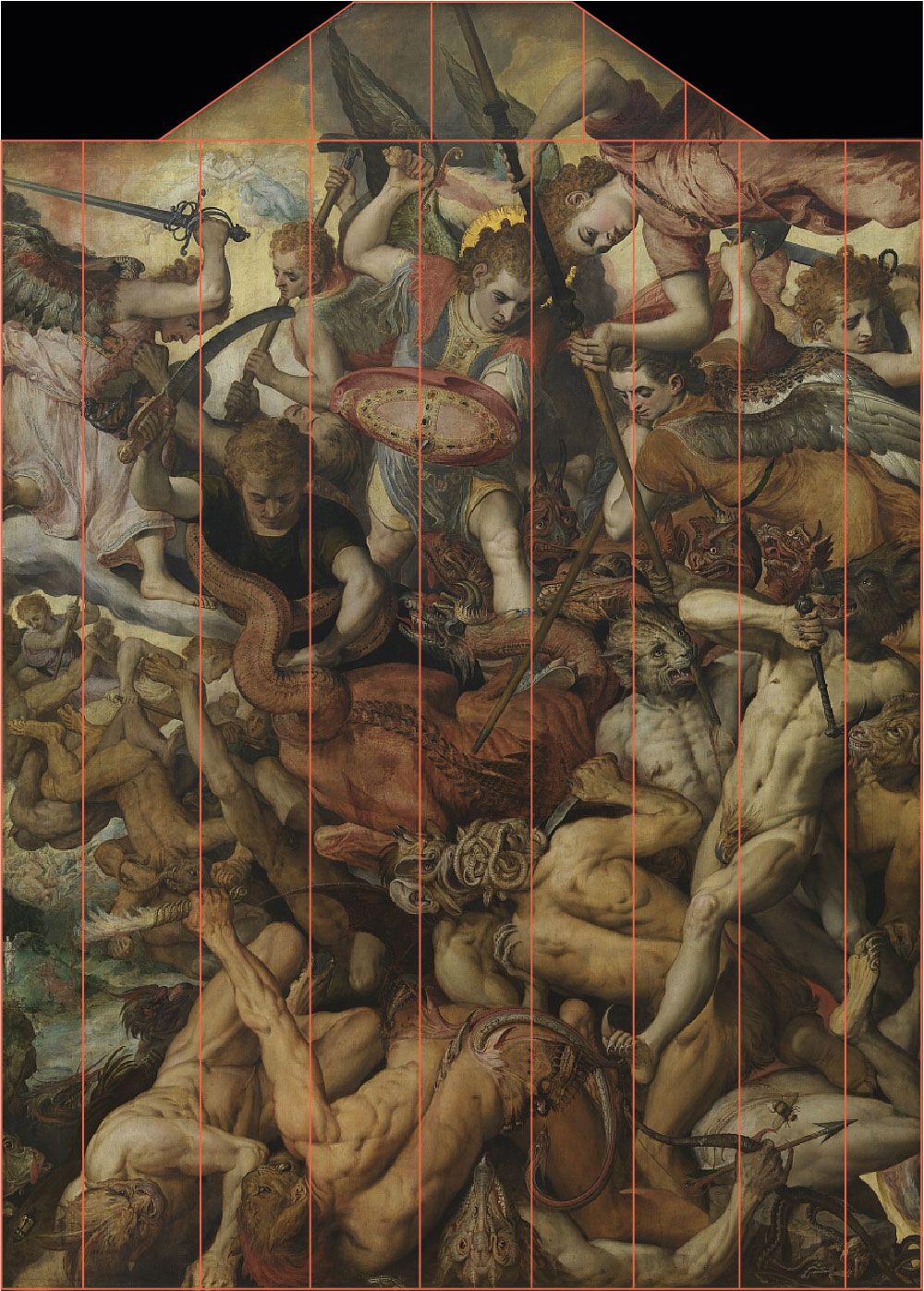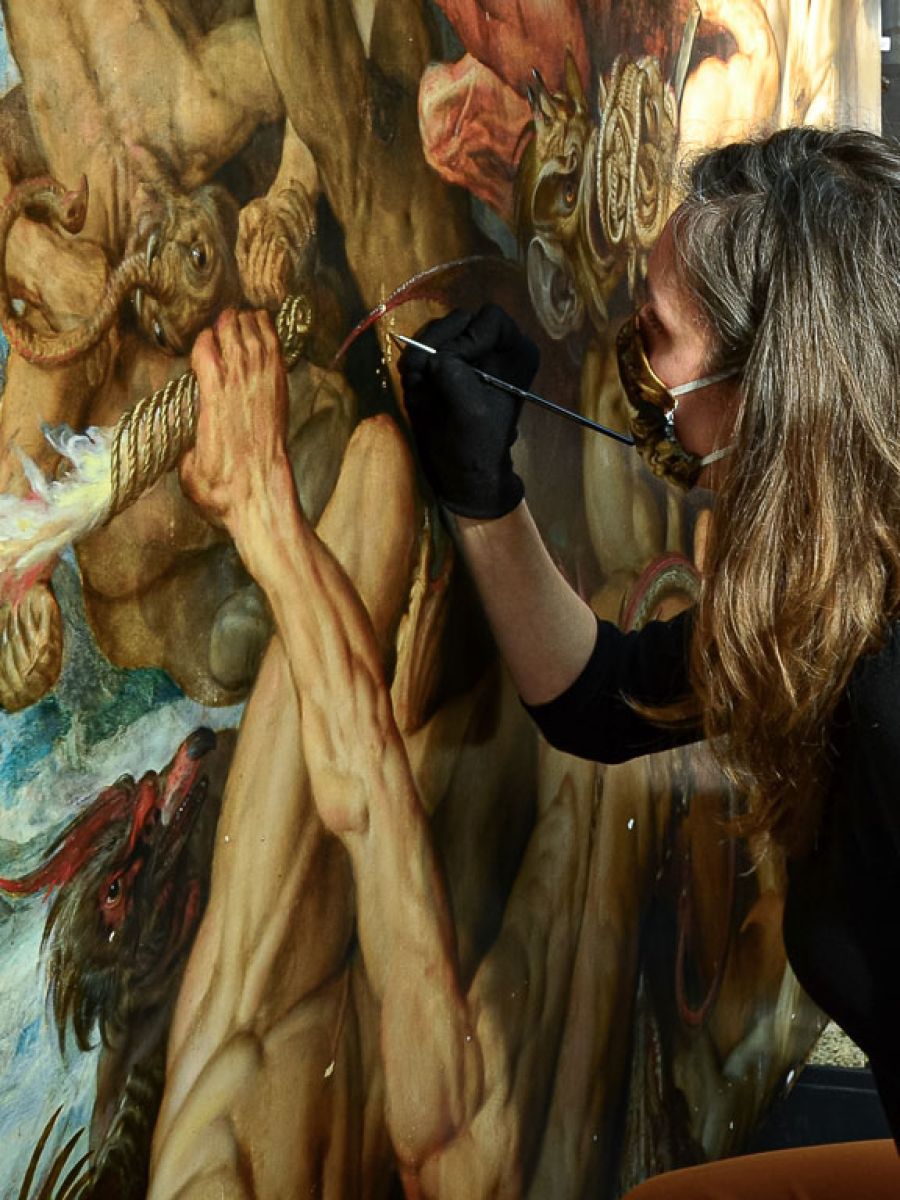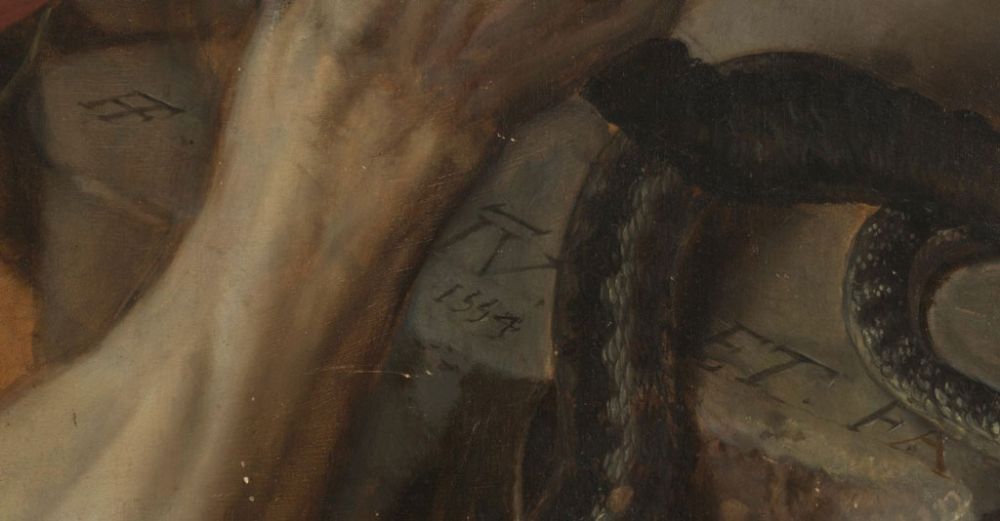Every restoration has insights and secrets

Painting under the scanner
A previous article, Angels under the scanner, described how the AXES research team from Antwerp University came along with their MA-XRF equipment. The aim of the scan was to determine whether a separate trapezoid at the top of The Fall of the Rebel Angels had been added by Floris himself or by another artist. The scanner provides an image of the chemical elements that are present, enabling researchers to detect any variation in pigment use. The layered structure certainly differs in the two parts of the painting.

An infrared image clearly shows the difference between the trapezoidal top and the rest of the painting. - Infrared photograph: Adri Verburg.
Where did the wood come from?
Additional dendrochronological research by the Royal Institute for Cultural Heritage (KIK-IRPA) has now also been completed. This technique analyses the annual growth rings in the wood. Trees from a particular region and period share the same growth pattern and so wood taken from them displays a consistent sequence of thicker and thinner rings. The thickness of the rings depends on the global climate and whether the trees grew in a region with seasons. Drastic weather events such as volcanic eruptions or particularly harsh winters can also be detected in growth rings.

The Fall of the Rebel Angels with a schematic representation of the boards on which the work was painted. The boards making up the trapezoid consist of oak from a different region and period than the rest of the painting.
A turbulent history (or not)
In 1554 the Antwerp fencers’ guild commissioned Frans Floris to paint a triptych for its altar in the city’s cathedral. An ensemble whose two side panels have since disappeared without trace. The central panel with The Fall of the Rebel Angels, meanwhile, was restored for the first time as early as 1567. One possible explanation was that the work was damaged by Calvinist rioters during the ‘Iconoclastic Fury’ a year earlier.

Claire Toussat and Eva van Zuien during the conservation process.
Conservation told a different story. Picture the chaos in the Cathedral during the outbreak of iconoclastic violence. One contemporary witness stated that what churches went through in the space of a few hours was like the Devil taking up residence for a hundred years. A preacher incited the Calvinist mob to destroy as many sculptures and paintings as possible.
So it is not implausible that The Fall of the Rebel Angels was damaged in such a scenario. Conservator Claire Toussat made a careful examination of all the likely areas of damage, given that Protestants did not destroy entire altarpieces for the most part, but scratched out the faces and sometimes the hands. And it turned out in this instance that no such damage was detected.
We know, moreover, that the Cathedral’s other large altarpieces were safely removed in time. One such was the Carpenters’ Altar by Quinten Massys in the KMSKA collection, which measures over six metres across when open.
A single letter, a world of difference
One last discovery in The Fall of the Rebel Angels was the addition of the letter ‘A’ to the signature of Frans Floris, FF. Originally there was just an ‘F’, which stands for the Latin fecit, meaning ‘made this’ – a statement expressing the artist’s pride. When a letter ‘A’ is added to the ‘F’, it means faciebat. In this case, a painter was indicating that he had done the work but had never finished it. Should the result be criticized, he could then always claim that he was interrupted while working but would put things right at some point. Could it be that the fencers’ guild was a difficult customer and that Frans Floris was trying to cover himself?

After the varnish had been removed, it was noticeable that the ‘A’ had been added to the signature in red at a later date. - Photograph: Rik Klein Gotink.
Conservation always teaches us more about the painter’s creative process and gives us an insight into the genesis of a work. All the same, this painting will probably keep some of his secrets, even if future techniques allow us to discover more than is possible today.



